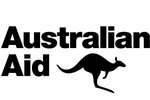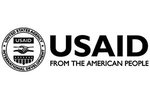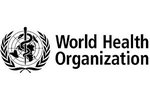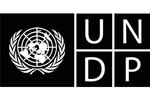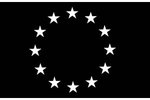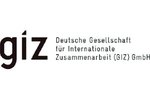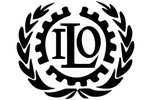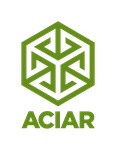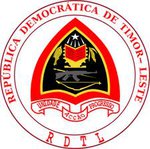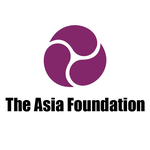Breaking the cycle: what we’ve learned from implementing a multi-sector nutrition program in Timor-Leste
Hamutuk is a multi-sector program bringing together more than 20 organisations to improve nutrition in Timor-Leste.

Everybody needs good nutrition to improve their future. Malnutrition is a very difficult issue, and that’s why partners need to work together.

Timor Leste has some of the highest rates of malnutrition in the world. Nearly half of all children under 5 years suffer from chronic undernutrition, or stunting, and over a third of all women are underweight. Reducing all forms of malnutrition is a national priority.
Stunting can affect children’s educational attainment as an adult. It can limit their earnings throughout life, and increase the risk of developing chronic disease. Preventing it can create intergenerational change for individuals, communities and nations, including social and economic benefits.
However, malnutrition is a challenging issue. While prevention and treatment is often associated with the provision of food or nutritional supplements, the causes of malnutrition are multi-sectoral, context-specific, often interlinked, and complex. Intergenerational behaviours can increase or decrease the risk of stunting. Washing hands with soap, for example, can help a child stay diarrhoea-free. Family planning to space births by at least two years increases the likelihood that an infant will be born a healthy birth weight. And ensuring girls complete secondary school improves educational attainment, minimises the likelihood of teenage pregnancies, and ensures better health and nutrition outcomes for future offspring.
Evidence tells us we need coordinated efforts across multiple sectors to change behaviors and make sustained reductions in malnutrition for current and future generations. However, this requires coordinated collective action, and there’s little evidence of this in practice. Hamutuk leverages innovation and technology to strengthen traditional intervention and enhance collective action. Together with government and development partners, we’re testing a programming approach that cultivates shared goals and can track progress across multiple sectors.
It’s a new approach, and we’re learning a lot as we work better together.
1. Collaboration can be difficult, but very rewarding.
In the aid sector, different programs have different priorities, timeframes, scope, and geographical coverage. These can change over time. In the three years we have been working with 20+ partners from NGOs to community leaders and government departments, we’ve realised that true collaboration requires consistent effort and ongoing learning. This includes an active ongoing process focused on learning, adapting, and advocating for shared commitments to improving nutrition.
In Hamutuk, we engage partners not only through communication, but by listening to their needs and including them in the design of all activities and tools. This is time consuming, but the rewards are great for partners, who own the benefit of collective inputs and can tailor their own programs. It’s also beneficial for communities, who receive more targeted interventions with better outcomes. For example, in October 2018, we launched a bespoke calendar through which partners can share activities, identify what’s happening in the community, understand each other’s roles, and combine efforts. Partners were involved in the design and function of the calendar, providing input on important fields that were relevant to their organisational planning and reporting. Based on partner use and feedback, we’ve built upon the entry form such as labels that show the type of events, target audience, and village location. A total of 307 community events have been shared.
Because partners collaborated in its design, the calendar was highly tailored and relevant. The government is now able to gain a clearer picture of what nutrition activities are taking place along with gaps in coverage.
2. Adaptability is fundamental to working in partnership with government.
Government ownership of programs is critical to sustainability. But because of its multi-sector nature, this can become complex for nutrition. In 2012, the Government of Timor-Leste created the National Council for Food Security, Sovereignty and Nutrition (KONSSANTIL, abbreviated from Tetun language), a multi-sector council represented by government institutions, development partners and civil society organisations. Hamutuk has worked closely with KONSSANTIL at the national and sub-national levels, supporting the council’s commitment to collective action.
One of the challenges has been maintaining this engagement at both levels. Being adaptable and responsive to changing government priorities has been a key lesson. For example, the national Ministry of Health identified the need for a repository to improve accessibility and use of materials across sectors. Hamutuk was able to respond to this by prioritising the development of the Hamutuk nutrition resource library. The library supports a shared goal of open source information to encourage coordination and collaboration. Through it, government and development partners have access to government-endorsed social and behaviour change materials, and can deliver them to communities. Seventy different resources have been uploaded to the library, and this number is growing.

The Hamutuk program allows many partners to be involved in reaching the same goal to eradicate stunting. However, to reach that, partners’ commitment to working together needs to increase, and we should all be able to maintain it.

3. Building organisational capacity means thinking long-term.
While one of Hamutuk’s key goals has always been to improve coordination across sectors, we learned early in the program that there are also obstacles to coordination within organisations and sectors. From long car rides to limited resources and patchy internet connectivity, communication is often limited between field-based staff and staff at the national level. We therefore took on an additional goal.
Initially, we’d assumed organisations would report work completed under the Hamutuk program (such as field visits, training sessions and behavioural information sessions) from municipal to national offices. We learned that this wasn’t always the case, with municipal offices often working independently on projects. To make collaboration and the flow of information happen more effectively within organisations, we had to think long-term.
Using a research and experience design process with our partners, our aim was to improve organisational communication, including data sharing and regular interaction between offices. The Hamutuk dashboard is now used to strengthen internal communication, monitoring and evaluation. With privacy filters in place, partner organisations can now see collective progress, shared data, and activities in the field. These tools and processes not only assist in data collection, but also allow partners to work more effectively with communities to address malnutrition.
4. Technology is a tool, not a solution.
Hamutuk’s baseline research confirmed that the most significant barriers to collaboration were coordination and communication. That’s what we’ve been aiming to improve, learning what works together with partners at the national and sub-national levels. We’ve built a shared calendar, a dashboard, and a chat system for the online platform, and our mobile app strengthens joint messaging and reporting, enables sharing of social and behaviour change materials, and makes information more accessible.
But it’s not what we’ve built that matters. What matters is how things are used.
Hamutuk is grounded in human-centred design, centering the development of products and services around partner and community needs, priorities, and goals. As a collective, Hamutuk’s goals are:
- To increase collaboration and coordination between partners working to improve nutrition-promoting behaviours
- To improve family nutrition practices
- To work closely with the Government of Timor-Leste to improve nutrition outcomes
Technology has helped us along the journey towards achieving these goals. But ultimately, it’s only part of the solution. Our calendar and chat features have supported collaboration, but only alongside frequent communication, adequate training, and by creating value for partners. Our dashboard has improved monitoring capability and data collection, but only with close collaboration from government partners to ensure their needs are met and reporting is aligned. And while the Hamutuk app can help partners share social and behaviour change materials with partners and community members, it’s the face-to-face interaction between field-based partners and the community that creates change.
That’s why when we talk about Hamutuk, it’s not necessarily about technology or innovation. Ultimately, it’s about collaboration, which requires consistent and sustained coordination, cooperation, and communication.
. . . . . .
Hamutuk is a multi-sector program bringing together more than 20 organisations to improve nutrition in Timor-Leste. Using a variety of innovative tools, it aims to enhance coordination and communication to create change for present and future generations. The program is led by Catalpa International and implementation is guided by the Australian Embassy in Timor-Leste, M&E House, and representatives of KONSSANTIL (the National Council for Food Security, Sovereignty and Nutrition in Timor-Leste).
Hamutuk is supported by AustralianAid via innovationXchange. This was originally published on the innovationXchange blog.
